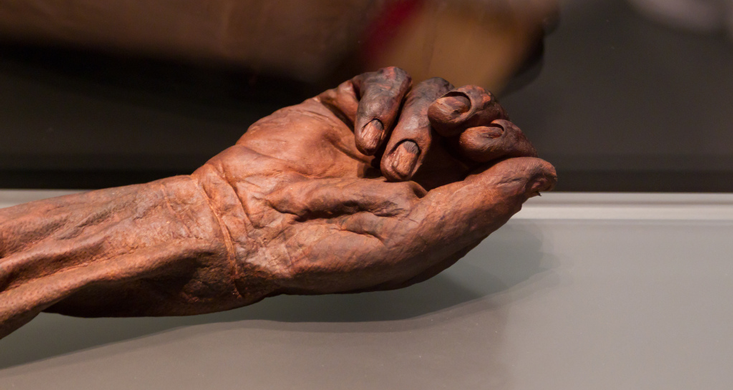
Laurence Arne-Sayles began with the idea that the Ancients had a different way of relating to the world, that they experienced it as something that interacted with them. When they observed the world, the world observed them back. If, for example, they travelled in a boat on a river, then the river was in some way aware of carrying them on its back and had in fact agreed to it. When they looked up to the stars, the constellations were not simply patterns enabling them to organise what they saw, they were vehicles of meaning, a never-ending flow of information. The world was constantly speaking to Ancient Man.
All of this was more or less within the bounds of conventional philosophical history, but where Arne-Sayles diverged from his peers was in his insistence that this dialogue between the Ancients and the world was not simply something that happened in their heads; it was something that happened in the actual world. The way the Ancients perceived the world was the way the world truly was. This gave them extraordinary influence and power. Reality was not only capable of taking part in a dialogue – intelligible and articulate – it was also persuadable. Nature was willing to bend to men’s desires, to lend them its attributes. Seas could be parted, men could turn into birds and fly away, or into foxes and hide in dark woods, castles could be made out of clouds.
Eventually the Ancients ceased to speak and listen to the World. When this happened the World did not simply fall silent, it changed. Those aspects of the world that had been in constant communication with Men – whether you call them energies, powers, spirits, angels or demons – no longer had a place or a reason to stay and so they departed. There was, in Arne-Sayles’s view, an actual, real disenchantment.
In his first published work on the subject (The Curlew’s Cry, Allen & Unwin, 1969) Arne-Sayles said that these powers of the Ancients were irretrievably lost, but by the time he wrote his second book (What the Wind Has Taken, Allen & Unwin, 1976) he was not so sure. He had experimented with ritual magic and now thought it might be possible to get some of the powers back, providing you had a physical link with a person who had once possessed them. The best sort of link would be actual remains – the body or part of the body of the person in question.
In 1976 Manchester Museum had in its collection four preserved bog bodies, dated between 10 BCE and 200 CE, and named after the peat bog in which they had been found; Marepool in Cheshire. They were:
- Marepool I (a headless body)
- Marepool II (a complete body)
- Marepool III (a head, but not one that belonged to Marepool I)
- and Marepool IV (a second complete body).
Arne-Sayles was most interested in Marepool III, the head. Arne-Sayles said that he had performed a divination that had identified the head as belonging to a king and a seer. The knowledge the seer had possessed was exactly what Arne-Sayles needed to further his own researches. Combined with his own theories, it would result in a water-shed moment for human understanding. In May 1976 Arne-Sayles wrote a letter to the director of the museum, asking to borrow the head so that he could perform a magical rite of his own invention, transfer the seer’s knowledge to himself and so usher in a New Age for Mankind. To Arne-Sayles’s astonishment, the director refused. In June Arne-Sayles persuaded fifty or so students to demonstrate outside the museum against this blinkered and outdated thinking. The students carried placards that said ‘Free the Head’. Ten days later there was a second demonstration, during which a window was broken and there was a scuffle with the police. After this, Arne-Sayles seemed to lose interest in the bog bodies.
At the end of December the museum closed for Christmas. When it reopened in the New Year, the staff discovered there had been a breakin. There was evidence of people having camped inside the museum. Food crumbs, biscuit packets and other litter were scattered about. There was a smell of cannabis. ‘Free the Head’ appeared again painted on a wall, and burnt stubs of candles were stuck to the floor. The candles formed a circle. Nothing appeared to have been taken but the cabinet in which Marepool III was displayed had been broken and the head had been handled. Some candle wax and fragments of mistletoe adhered to it.
The police and the museum staff naturally suspected Arne-Sayles. Arne-Sayles however had an alibi; he had spent the Midwinter festival with some wealthy neo-pagans at a farmhouse in Exmoor. The neo-pagans (people called Brooker) confirmed this. The Brookers revered Arne-Sayles as an extraordinary genius and a sort of pagan saint. The police did not think their testimony was reliable but had no means of refuting it.






